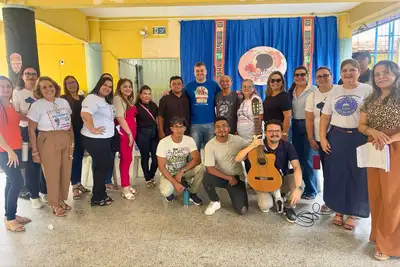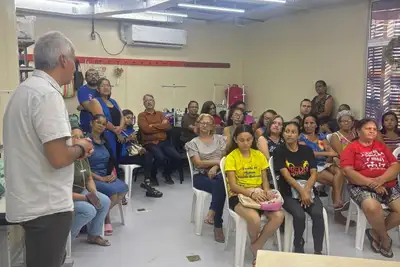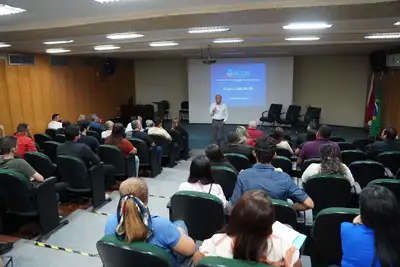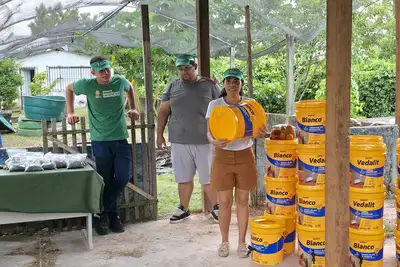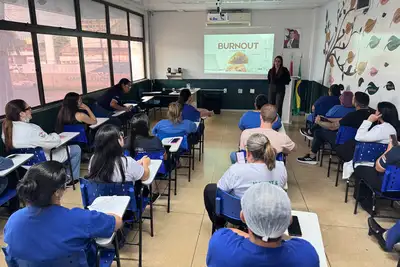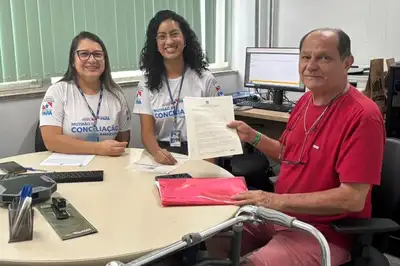Concert-Class Contributes to the Well-Being of Children in Renal Therapy at Santa Casa
The experience involved eight children in treatment, who were surprised by the sound of the instrument and were able to play and understand how the violin works.
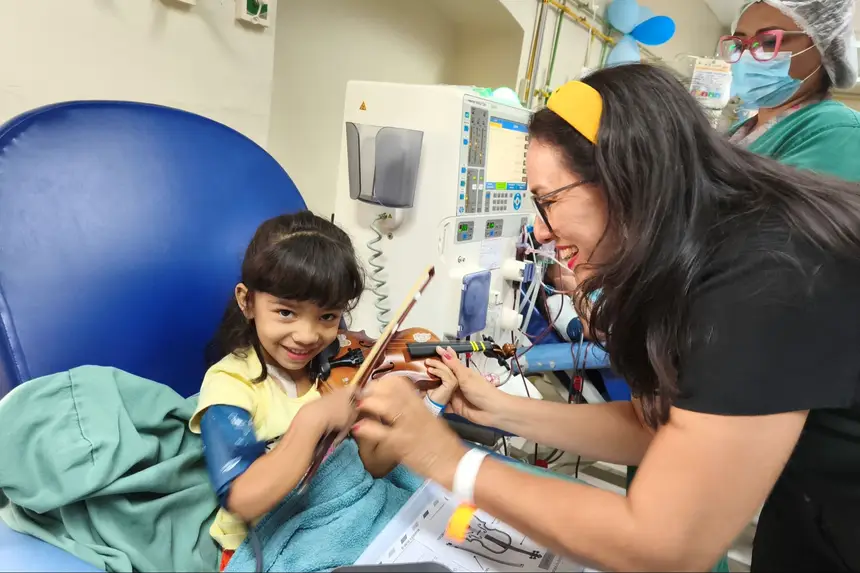
When it comes to benefits, it is even difficult to stop listing the many contributions that music can bring to a person's physical and mental health. Cognitive stimulation, emotional regulation, well-being, motor development, social stimulation, communication, autonomy, identity, and also routine and occupational organization are some of the gains mentioned by occupational therapist Clévia Dantas, who works in the pediatric renal replacement therapy sector at Santa Casa.
“Music plays an extremely valuable role in Occupational Therapy because it directly affects fundamental areas for human development, rehabilitation, and quality of life. It is a powerful tool that integrates mind, body, and emotion, favoring occupational performance and promoting health and well-being,” emphasizes Clévia Dantas.
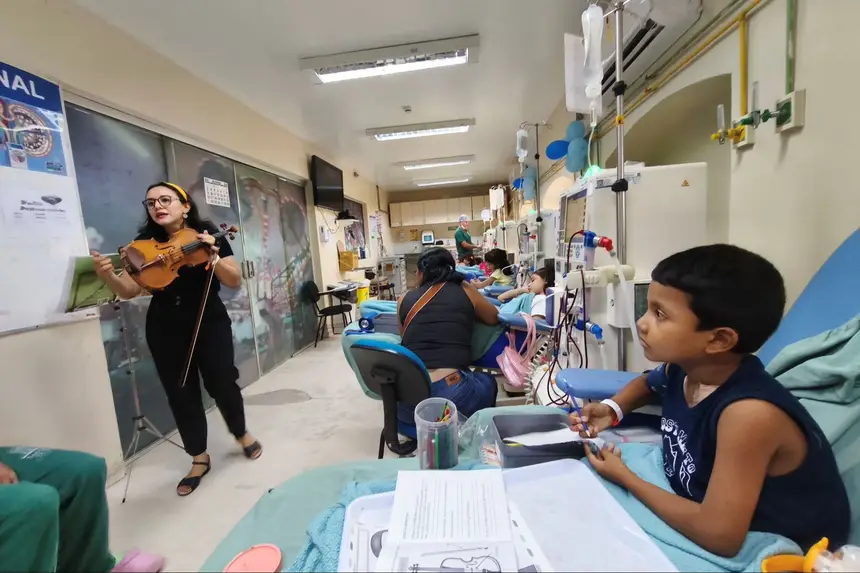
On the afternoon of this Tuesday (11), music played again in the pediatric renal replacement therapy sector at Santa Casa. But this time it was not just a performance, nor a game, but a lesson on an instrument that few children knew, the violin.
The initiative came from Rafaele Cordeiro, mother of Clarisse, seven years old, who has been undergoing hemodialysis at Santa Casa for two years. As a violin teacher and a graduate in music education, she needed to develop an academic project on quality education and decided to challenge herself by giving a music lesson to the children during the hemodialysis session.
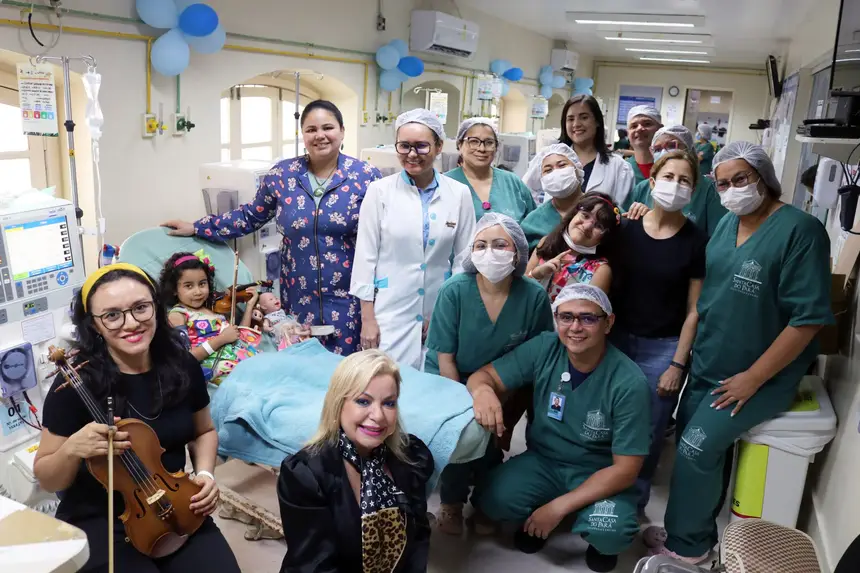
“I work with music and was already conducting a project with Brazilian folk songs, so I thought, why not combine music, art, and bring it to hemodialysis and to the children? We are here and know the difficulty, so I started aligning things and it was possible to provide them with quality education, bringing this instrument that is not something you see everywhere, and also the issue of Brazilian music, because often education does not have this listening at home. So, I also provide the opportunity to work on folk music, to get to know the instrument,” says Rafaele.
The experience involved eight children in treatment, who were surprised by the sound of the instrument and were able to play and understand how the violin works.
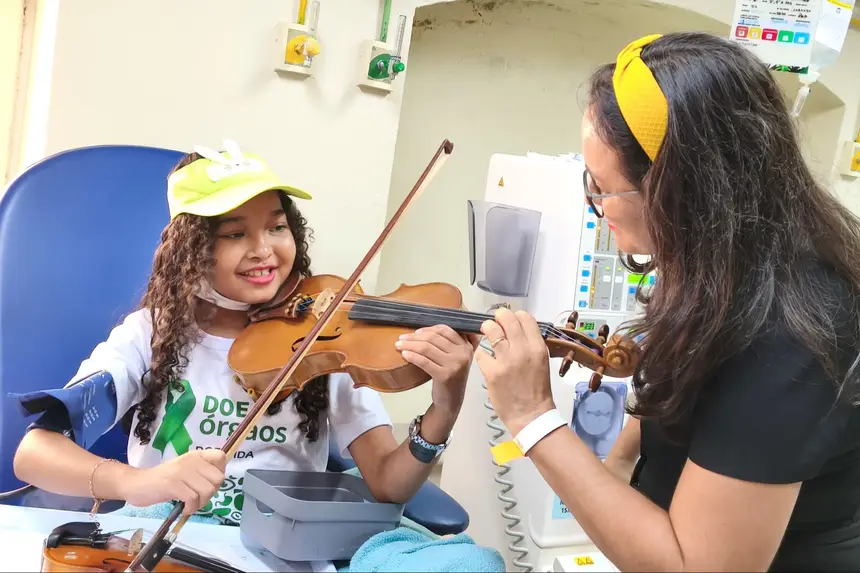
“I found it very interesting and it was the first time he saw this instrument. He was very interested and will definitely want to attend more classes,” says Dielma Balbino, mother of Paulo Eduardo, eight years old, who has been in treatment for a year.
In addition to getting to know the violin, the children had an introduction to rhythm and music theory. The expectation is that the experimental class will turn into a permanent project for the patients treated in the sector, contributing to the intellectual development and treatment of the little ones, as emphasized by occupational therapist Clévia Dantas.
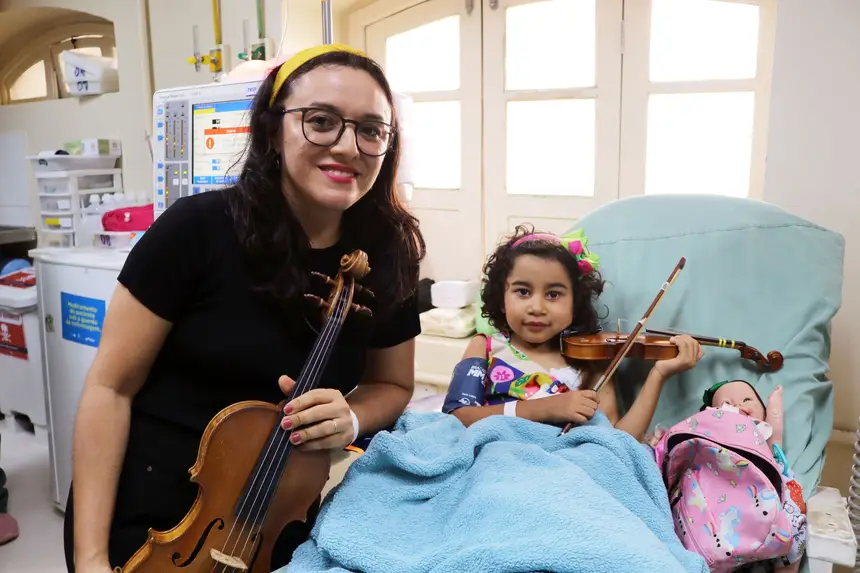
“Music sharpens memory, concentration, the notion of the figure of what they are listening to, which is the perception of the object, the sensory stimuli, because hearing music and feeling is different. Feeling the sound of the violin makes the child recognize other sounds, not just the sound of pain, subjectively speaking, because the sound of pain is just seeing the bandage that is done. So, it stimulates cognitive aspects, but also social ones, as they want to grab, they want to talk, they want to know. At the same time, it enables mental health, because it disperses the condition of just pain, but allows them to understand that even in a chronic treatment environment, they can have other experiences,” she concludes.


